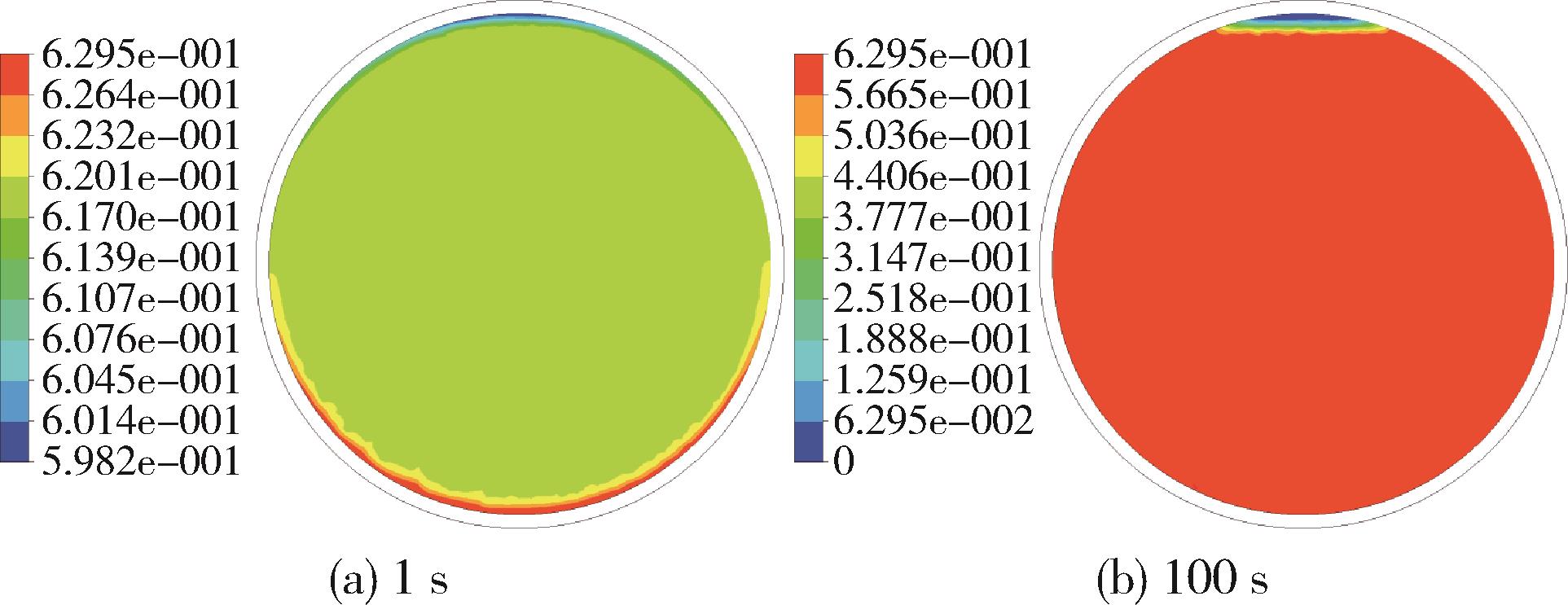京ICP备13020181号-2
© 《China Plastics》
© 《China Plastics》

China Plastics ›› 2023, Vol. 37 ›› Issue (1): 82-89.DOI: 10.19491/j.issn.1001-9278.2023.01.013
• Processing and Application • Previous Articles Next Articles
Received:2022-10-16
Online:2023-01-26
Published:2023-01-26
CLC Number:
LIU Xuejun. Two research methods for heat transfer coefficient at inner surface of rotational mold in heating phase[J]. China Plastics, 2023, 37(1): 82-89.
Add to citation manager EndNote|Ris|BibTeX
URL: https://www.plaschina.com.cn/EN/10.19491/j.issn.1001-9278.2023.01.013
| 情形名称 | a/×10-4 | b/×10-2 | c | d/×10-6 | e/×10-3 | f | g |
|---|---|---|---|---|---|---|---|
| 情形1 | 3.14 | 7.79 | 40.7 | -19.7 | 6.57 | -0.142 | 64.7 |
| 情形2 | 9.53 | -2.32 | 39.8 | -8.72 | 2.39 | 0.299 | 52.4 |
| 情形3 | 9.43 | 2.48 | 36.1 | -3.24 | 0.351 | 0.536 | 52.6 |
| 情形4 | 15.3 | -7.71 | 38.3 | -14.1 | 4.21 | 0.167 | 65.5 |
| 情形名称 | a/×10-4 | b/×10-2 | c | d/×10-6 | e/×10-3 | f | g |
|---|---|---|---|---|---|---|---|
| 情形1 | 3.14 | 7.79 | 40.7 | -19.7 | 6.57 | -0.142 | 64.7 |
| 情形2 | 9.53 | -2.32 | 39.8 | -8.72 | 2.39 | 0.299 | 52.4 |
| 情形3 | 9.43 | 2.48 | 36.1 | -3.24 | 0.351 | 0.536 | 52.6 |
| 情形4 | 15.3 | -7.71 | 38.3 | -14.1 | 4.21 | 0.167 | 65.5 |
情形 名称 | 第一种方法的结果/ W•m-2•K-1 | 第二种方法的结果/ W•m-2•K-1 | 相对误差/ % |
|---|---|---|---|
| 情形1 | 31.1 | 33.4 | 7.4 |
| 情形2 | 42 | 43.1 | 2.6 |
| 情形3 | 61.2 | 47.7 | 22.1 |
| 情形4 | 48.4 | 47.8 | 1.2 |
情形 名称 | 第一种方法的结果/ W•m-2•K-1 | 第二种方法的结果/ W•m-2•K-1 | 相对误差/ % |
|---|---|---|---|
| 情形1 | 31.1 | 33.4 | 7.4 |
| 情形2 | 42 | 43.1 | 2.6 |
| 情形3 | 61.2 | 47.7 | 22.1 |
| 情形4 | 48.4 | 47.8 | 1.2 |


| 1 | 张惠敏.塑料旋转成型的特点与研究[J].工程塑料应用,2002, 30 (4): 23⁃26. |
| ZHANG H M. Characteristics and research of rotational molding of plastics [J]. Application of Engineering Plastics, 2002, 30(4):23⁃26. | |
| 2 | WRIGHT M J, SPENCE A G, CRAWFORD R J. Analysis of heating efficiency in rotational moulding [C]//Proceedings of the 1997 55th Annual Technical Conference, ANTEC, Toronto, Canada: Society of Plastics Engineers, 1997: 3 184⁃3 188. |
| 3 | MONZON M D, BORDON P, BENITEZ A N, et al. Global efficiency of innovative rotational mold directly heated by thermal fluid [J]. Polymer Engineering and Science, 2012, 52(9): 1 998⁃2 005. |
| 4 | MCDOWELL G W G, ORR J F, CRAWFORD R J, et al. The electric heating of moulds for the rotational moulding of plastics [C]//35th Universities Power Engineering Conference, Belfast, United Kingdom: Technological Educational Institute, 2000: 94. |
| 5 | NUGENT P J, CRAWFORD R J, XU L. Computer prediction of cycle times during rotational molding of plastics [J]. Advances in Polymer Technology, 1992, 11(3): 181⁃191. |
| 6 | GOGOS G, OLSON L G, LIU X J, et al. New models for rotational molding of plastics [J]. Polymer Engineering and Science, 1998, 38(9): 1 387⁃1 398. |
| 7 | GOGOS G, LIU X J, OLSON L G. Cycle time predictions for the rotational molding process with and without mold/part separation [J]. Polymer Engineering and Science, 1999, 39(4): 617⁃629. |
| 8 | OLSON L G, CRAWFORD R, KEARNS M, et al. Rotational molding of plastics: comparison of simulation and experimental results for an axisymmetric mold [J]. Polymer Engineering and Science, 2000, 40(8): 1 758⁃1 764. |
| 9 | GRECO A, MAFFEZZOLI A, VLACHOPOULOS J. Simulation of heat transfer during rotational molding [J]. Advances in Polymer Technology, 2003, 22(4): 271⁃279. |
| 10 | BANERJEE S, YAN W, BHATTACHARYYA D. Modeling of heat transfer in rotational molding [J]. Polymer Engineering and Science, 2008, 48(11): 2 188⁃2 197. |
| 11 | ABDULLAH M Z, BICKERTON S, BHATTACHARYYA D. Rotational molding cycle time reduction through surface enhanced molds: part A⁃theoretical study [J]. Polymer Engineering and Science, 2007, 47(9): 1 406⁃1 419. |
| 12 | OLINEK J, ANAND C, BELLEHUMEUR C T. Experimental study on the flow and deposition of powder particles in rotational molding [J]. Polymer Engineering and Science, 2005, 45(1): 62⁃73. |
| 13 | 田 昊,李水清,柳冠青,等.回转圆筒内颗粒流速度场的实验研究[J].工程热物理学报,2008, 29 (7): 1 159⁃1 162. |
| TIAN H, LI S Q, LIU G Q, et al. Velocity profiles of granular materials in a two⁃dimensional rotating drum [J]. Journal of Engineering Thermophysics, 2008, 29(7): 1 159⁃1 162. | |
| 14 | 刘学军.滚塑模具内表面传热系数与模具转速间关系的研究[J].中国塑料,2022,36(3):134⁃139. |
| LIU X J. Study on relationship between heat transfer coefficient at inner surface of rotational mold and its rotation speed [J], China Plastics, 2022, 36 (3): 134⁃139. | |
| 15 | 郭同凯.旋转模塑过程的热交换计算机模拟系统[J].新技术新工艺,1997(3): 7⁃9. |
| GUO T K. Computer⁃simulating system of heat transfer for rotational molding process [J]. New Technology and Process, 1997(3):7⁃9. | |
| 16 | 袁竹林,朱立平,耿凡 等.气固两相流动与数值模拟[M].南京:东南大学出版社,2013: 29⁃30. |
| 17 | 杨世铭,陶文铨.传热学[M].北京:高等教育出版社,2006: 197⁃198. |
| Viewed | ||||||
|
Full text |
|
|||||
|
Abstract |
|
|||||
